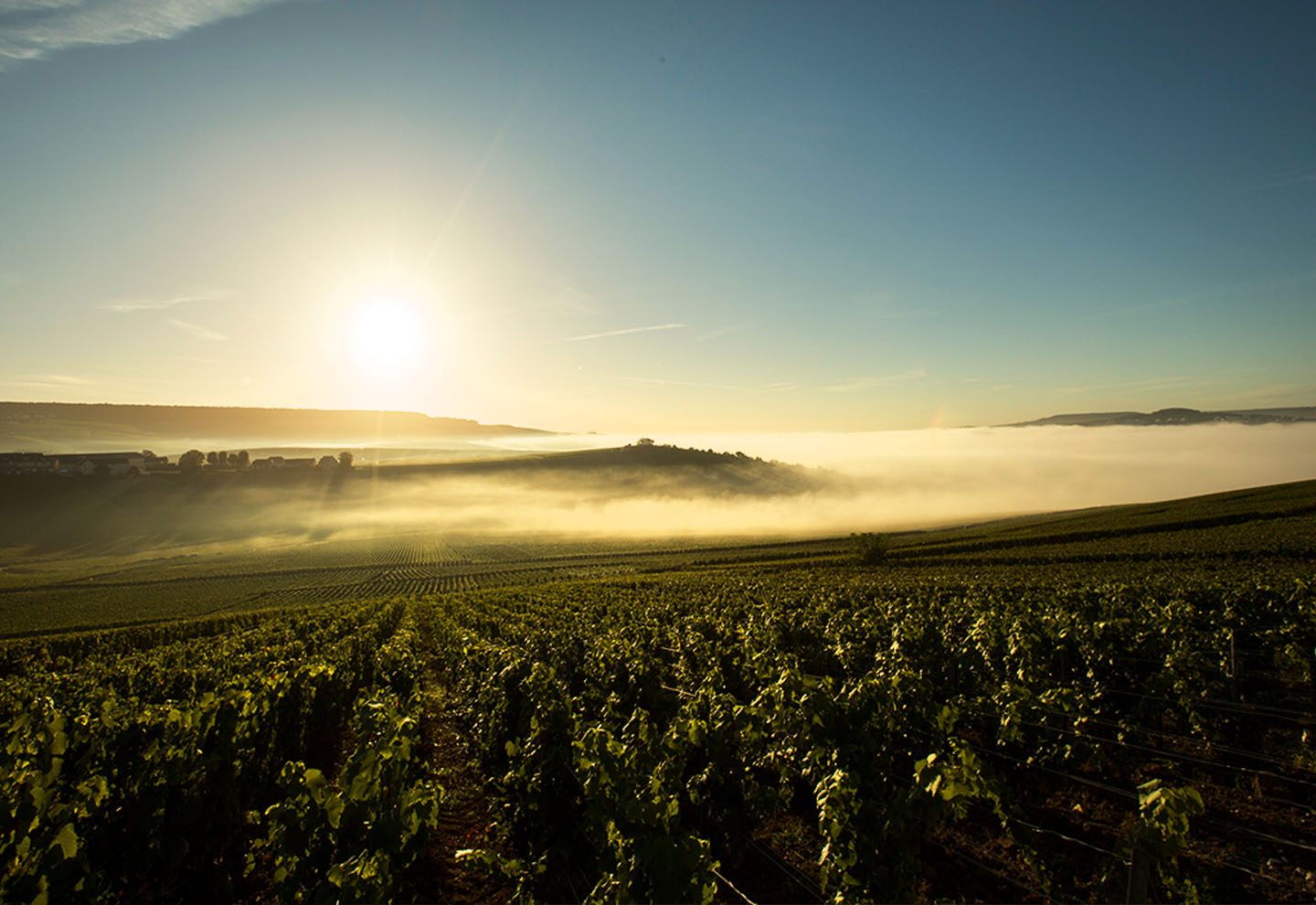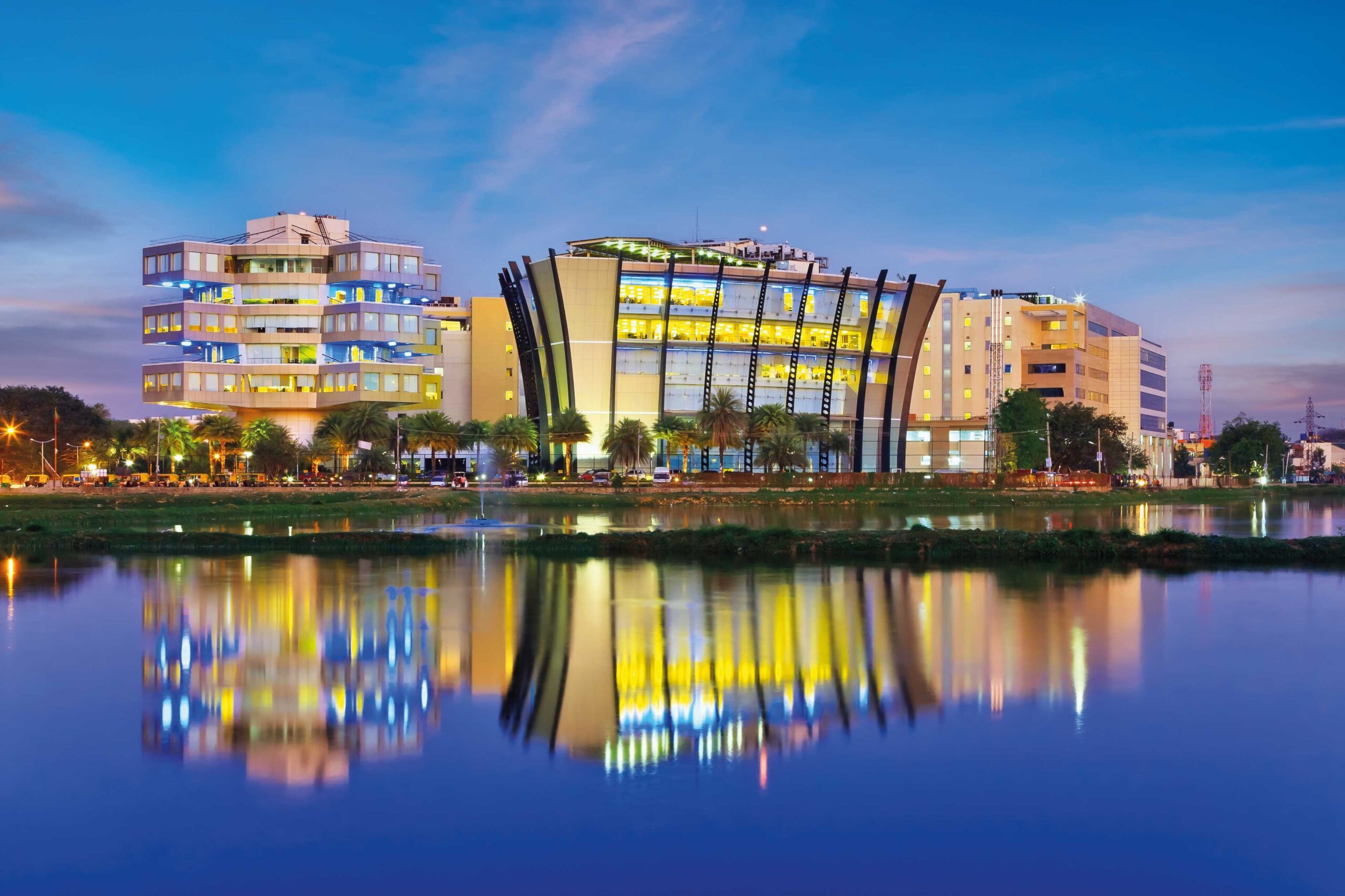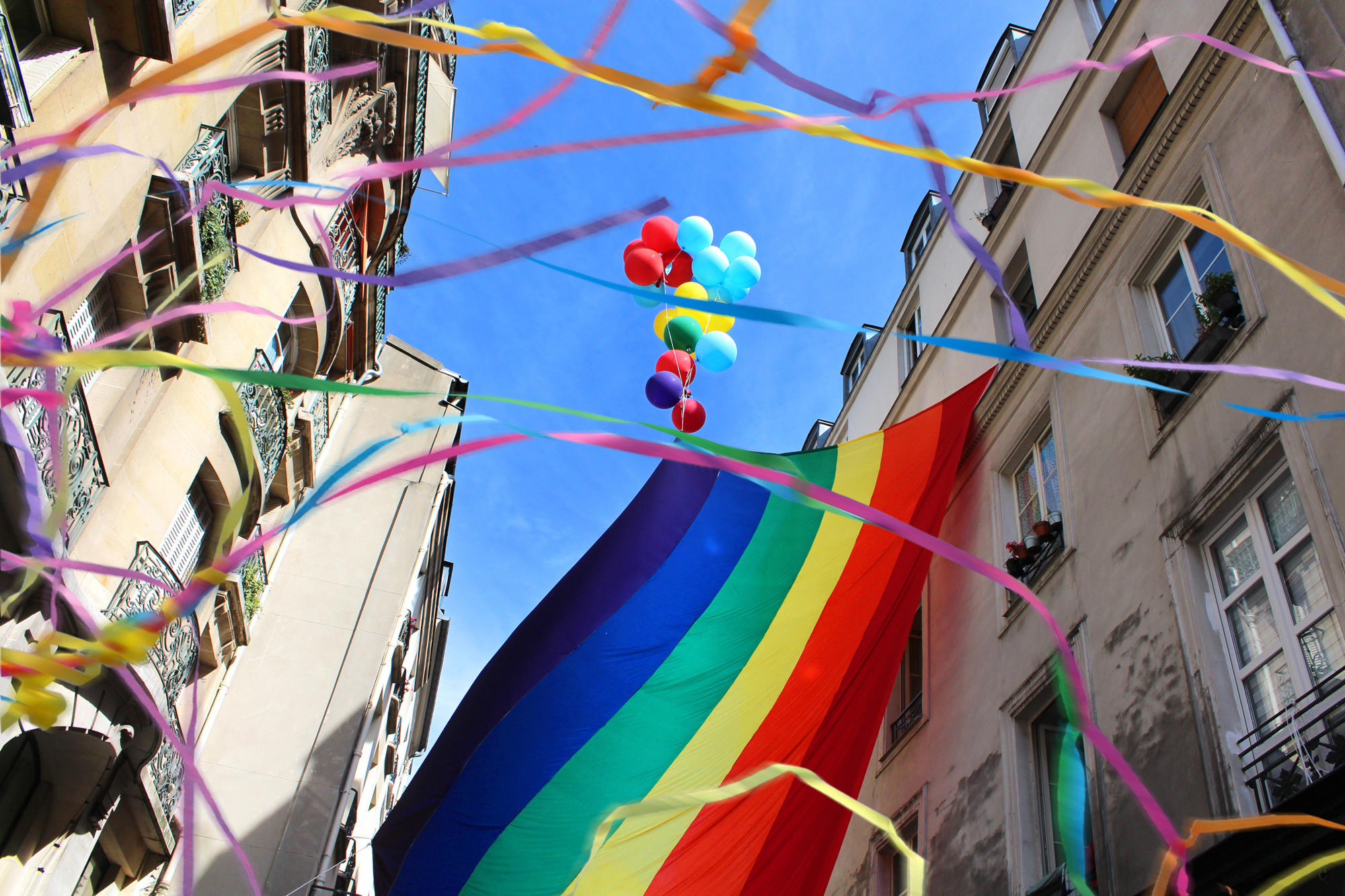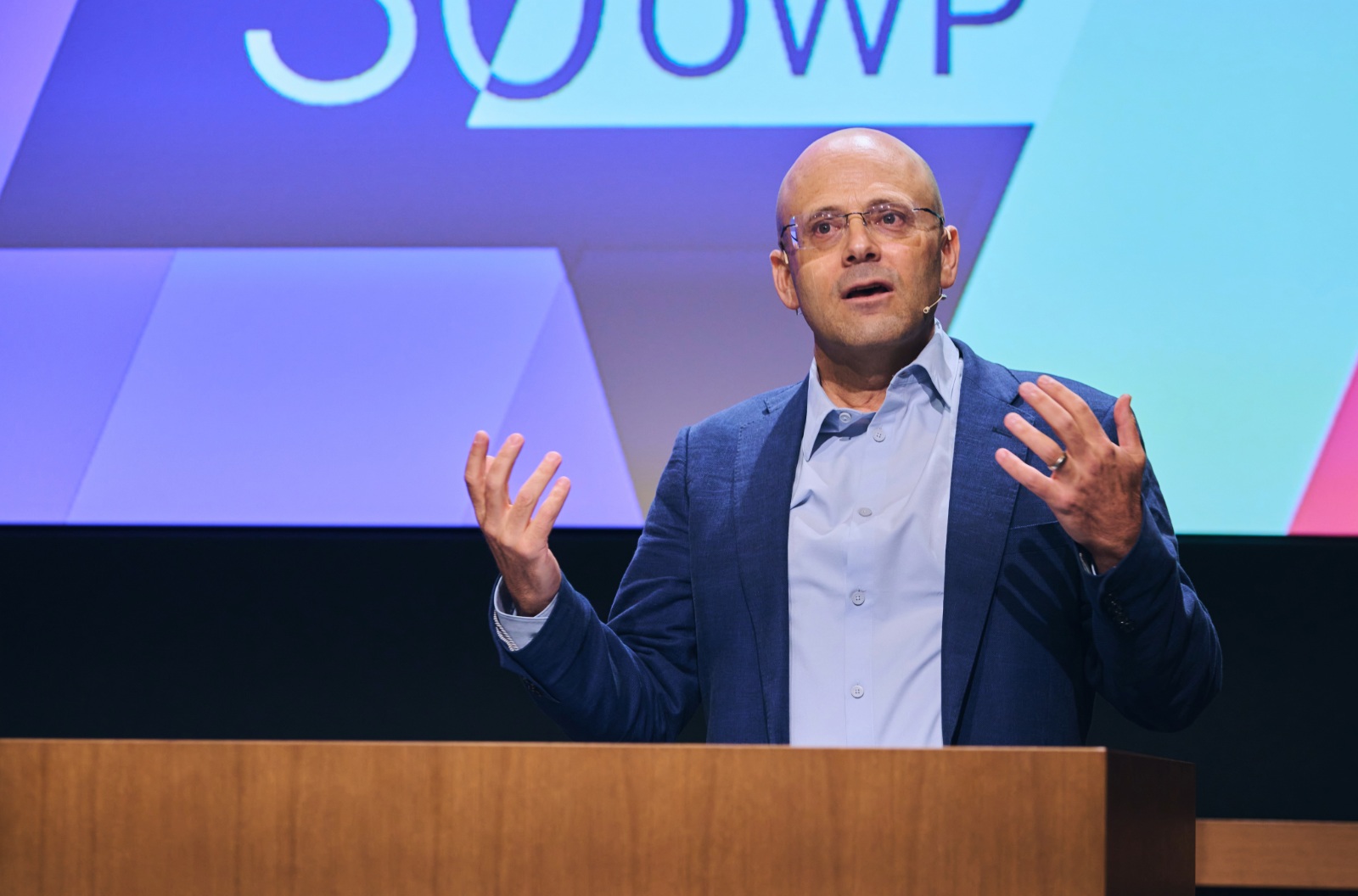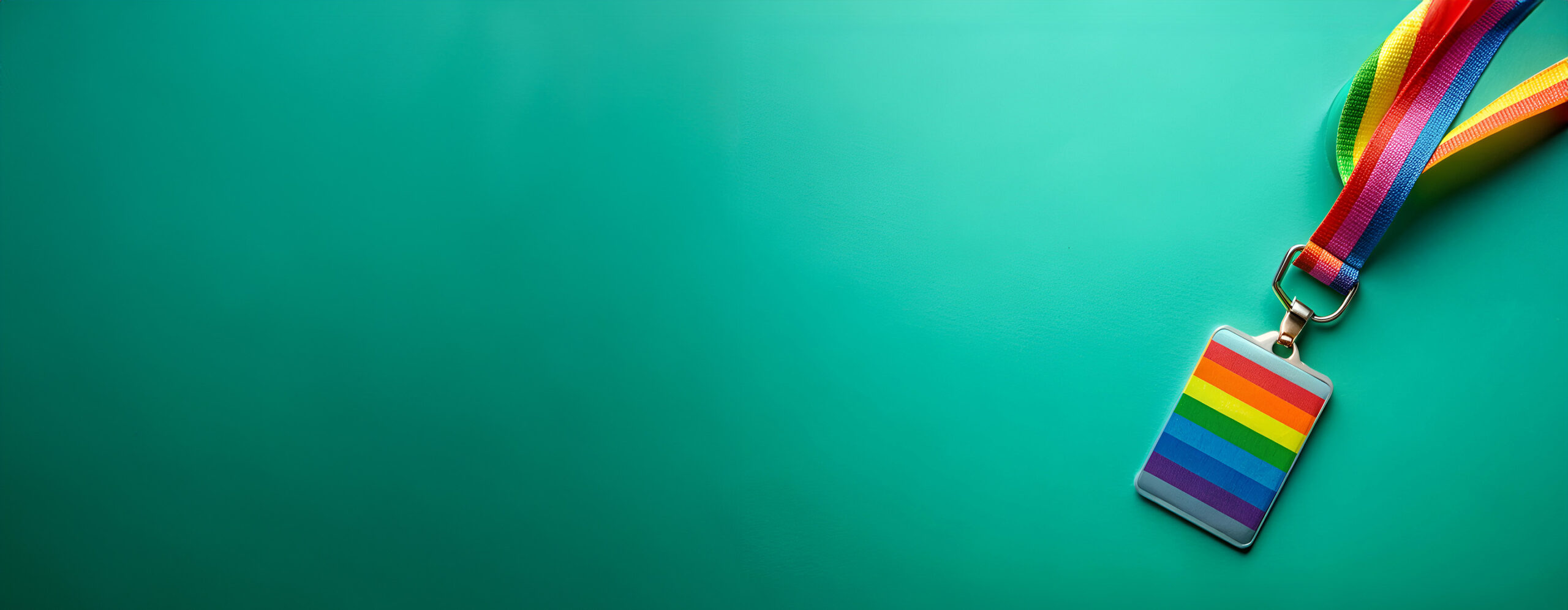On 15 September, 2020, Dom Pérignon released the 2010 vintage, being amongst the very few Champagne houses to present a bottle from one of the most challenging vintages ever. Ten years ago, in early September 2010, two days of diluvian rain – the equivalent of two months of rain in just 48 hours – suddenly pushed grape maturation to the edge in a critical moment preceding the vendange. Botrytis mold aggressively attacked grapes – primarily the pinot noir, a crucial grape for the Champagne process.
Champagne houses were suddenly in an extremely difficult position. They had to decide whether to lose the entire vintage or rush to try to harvest grapes that had been spared from the mold even if they had not reached ideal maturation. Most houses opted for the former. By contrast – as illustrated by its Chef de Cave, the French term for head winemaker, Vincent Chaperon – Dom Pérignon embraced the challenge and opted for the latter option. In a race against the clock, it deployed its full resources to trace a precise map charting the maturity and health of each grape in its vineyards. This was a monumental effort undertaken under extreme pressure that required great precision and an intimate knowledge of the terroir. Once the vendange was over, it soon became clear that the pinot noir grapes that had been saved were of magnificent quality, allowing Dom Pérignon to be one of the very few houses to declare a vintage quite literally “saved from the waters.” Dom Pérignon had thus managed to turn what at first appeared to be natural adversity into the trigger for a remarkably high-quality production that most competitors entirely missed.
Fast forward 10 years and the entire world is wondering how to deal with the consequences of a devastating natural calamity, the COVID-19 pandemic. While it is still too early to measure the ultimate economic impact of this pandemic, it is apparent that the coronavirus has already hit the luxury sector hard. The luxury world is highly exposed to the changes in consumer habits imposed by COVID-19, and some of these changes are expected to be there for the longer term. In these difficult times, understanding how companies may react to daunting challenges created by unexpected changes in their environments becomes even more crucial for luxury companies.
In this article, we first discuss the impact of this crisis on the luxury sector, identifying three trends that are relevant for today’s environment and are expected to shape its evolution: the shrinkage of the market; the attention to sustainability; and the shift to digital. We will then concentrate on how Dom Pérignon’s illuminating experience from ten years ago can help us identify three recommendations for luxury companies to navigate through the pandemic and emerge stronger than before: embrace change with creative ambition, nurture a relentless aspiration to quality and identify a clear and sustainable purpose for what you do.
The shrinkage of the market
The global luxury market – worth roughly $350 billion prior to the pandemic – is expected to lose between 20% and 30% in revenues in 2020. This will bring the luxury market back to the levels of 2011, and thus nearly a decade of growth will be lost. This expectation remains uncertain – with observers modeling scenarios ranging from a more moderate loss of 15% to a staggering 35% – and significant variations exist across luxury goods categories (for instance, luxury cruises will be hit dramatically more than fine wines and spirits). Moreover, the rebound registered by luxury companies since June – especially in China, as it was the case for LVMH – has given hope for a faster recovery. Still, for several companies it may very well take years before seeing their sales back to pre-COVID-19 levels. Thus, looking forward, the luxury world is likely to be characterized by an overall smaller market size and even more entrenched competition. And if some of the changes imposed by the pandemic become part of the “new normal”, consumption of luxury goods may remain more limited for an even longer period of time. For instance, consider that between 20% and 30% of luxury purchases have been traditionally completed by consumers outside their home countries. This implies that until air traffic picks up substantially again, luxury companies will inevitably lose a portion of their sales.
The attention to sustainability
More and more people are questioning (and rightly so) whether the status quo is sustainable from an environmental perspective. For instance, the creation and mass utilization of plastic has been revolutionary for several industries. Annually, 91% of the plastic that is produced worldwide is not recycled, ending up in waste sites and in our oceans. The terrible effects of our mass usage of plastic is evident globally, leaving microplastic and nanoplastic in our environment. With global population growth, climate change, scarcity of natural resources, and the mounting evidence of the disastrous effects of human behavior on our natural environment, consumers of luxury goods are showing a growing desire for more responsible consumption. The COVID-19 pandemic has greatly enhanced the concern and media coverage of these crucial issues. For instance, published research is already pointing at the positive association between exposure to air pollution and COVID-19 mortality. The attention to sustainability can be expected to become a defining aspect of the luxury sector in the aftermath of the pandemic.
The shift to digital
E-commerce channels grew significantly before COVID-19, having registered a year-to-year growth higher than 20% for over the last decade. In 2019 e-commerce already accounted for roughly 10% of the overall volume of revenues and the general expectation was that it would reach 20% by 2025. The lockdown and consequential store closures around the world strongly reinforced this pattern, with luxury companies seeing an exponential increase in online traffic and digital engagement with consumers. The 20% target may therefore be reached well before 2025 based on the evolution of the pandemic and the related imposed changes on consumers’ habits. Two dynamics at play are set to further reinforce the shift to digital in the aftermath of COVID-19. First, the pandemic has pushed customers that until now had remained loyal to the in-store purchasing experience to shift to the online store. This has vastly broadened the users’ base of e-commerce in the luxury sector. Second, with traveling and events banned or severely limited, luxury companies have concentrated their attention on how to enhance digital engagement with their customers. An omnichannel strategy with heightened focus on the online environment is thus set to become dominant in the sector. For instance, the two luxury houses Ferrari and Hublot have partnered to focus on e-sport, creating an online racing competition where participants will confront themselves onboard the Ferrari 488 Challenges Evo through the Assetto Corsa online game. During the virtual competition, participants will benefit from the advice of Charles Leclerc. This is an innovative way to engage with consumers and create a highly personalized luxury experience in the digital space.
How are these three trends likely to influence the way luxury companies should approach the daunting challenges posed by the pandemic going forward? Can Dom Pérignon’s experience from ten years ago be helpful to inspire luxury companies’ efforts to respond to unexpected changes such as the coronavirus in today’s environment?
Embrace change with creative ambition
Ten years ago, when confronted with a sudden and adverse change in the environment, Dom Pérignon was amongst the very few Champagne houses that immediately embraced change and adapted to the new reality. It did so by relying on the ambition to live up to its glorious tradition. Nowadays, it takes at least eight years to make a bottle of Dom Pérignon, the same time it took to make it 400 years ago. And yet creativity is an integral part of the process, as every year Dom Pérignon is faced with changes – at times sudden and painful as the one faced ten years ago – that require a creative response to keep on delivering a Champagne that matches Dom Pérignon’s tradition. Over time, this creative ambition has remained a foundational aspect of the Champagne house. In today’s fast-paced environment, further accelerated by the changes imposed by the pandemic and the resulting shift to the digital space, luxury consumers are more sensitive than ever to the notion of timeless heritage and authenticity of the brand. The ability for a company such as Dom Pérignon to stay loyal to its tradition and anchor its product offerings to its traditional values and exclusivity principles is key to maintain customer engagement and differentiate from its competitors – especially nowadays that such engagement occurs through novel (digital) channels. In a world where everything is changing constantly, the ability to embrace change with creativity while maintaining the ambition to stay loyal to its authentic heritage and timeless values can be a key differentiator for luxury companies.
Nurture a relentless aspiration to quality
A luxury company’s focus on quality is nothing new. But the case of Dom Pérignon illustrates clearly what an unremitting commitment to quality can really lead to when united with perseverance and audacity. When the Benedictine monk named Dom Pierre Pérignon started experimenting with different ways of making wine in the region of Champagne – known at the time for the production of a rather mediocre white wine – he was driven by the obsession to transform it into “the best wine in the world,” as he used to mention in his correspondence with King Louis XIV. One of the implications of this relentless aspiration to reach the highest possible quality is that Dom Pérignon always presents a vintage wine – that uses the grapes of the same year, whatever the challenges may be, and even if this means accepting that in some years a vintage cannot be declared. This commitment made things even more complicated ten years ago, and yet it was precisely the quest for the highest quality that triggered the monumental effort to make the vendange possible. Nowadays, with competition set to increase in a shrinking, crowded luxury sector, an ordinary commitment to high-quality will not make the difference. In the aftermath of COVID-19, luxury companies will need to instill an unremitting focus on highest quality within their organizations if they want to win tomorrow’s competitive battle.
Identify a clear and sustainable purpose for what you do
Ten years ago, it was the profound knowledge of the terroir and its commitment to express nature in all its forms that enabled Dom Pérignon to save part of the grapes and be amongst the very few Champagne houses to declare the 2010 vintage. The “méthode champenoise” mastered by Dom Pérignon has always been undertaken in absolute respect of the environment. Nearly 400 years have passed since the first production and the attention to environmental aspects is still a foundational principle of Dom Pérignon’s vintage. The proximity to nature seems obvious for a Champagne house. And yet Dom Pérignon has managed to excel on this front vis-à-vis its competitors. This approach can serve luxury companies well beyond the wine industry. Companies need to show that their products are produced in a truly sustainable manner, thus in complete harmony with the natural environment. Research conducted before the pandemic already suggested that consumers are increasingly looking at how sustainable firms are when making their purchasing decisions, and that they are willing to pay a higher price for more sustainable brands. The COVID-19 pandemic has further reinforced this trend. So, luxury products that are innovative but not truly sustainable from an environmental standpoint are expected to face tough times in the market in the years to come. Only companies with a clear and sustainable purpose are likely to succeed.
The above recommendations, together with a nuanced understanding of the trends that are expected to shape the future of the luxury sector, can help executives navigate through today’s volatility while preparing luxury companies to succeed in the longer term.
